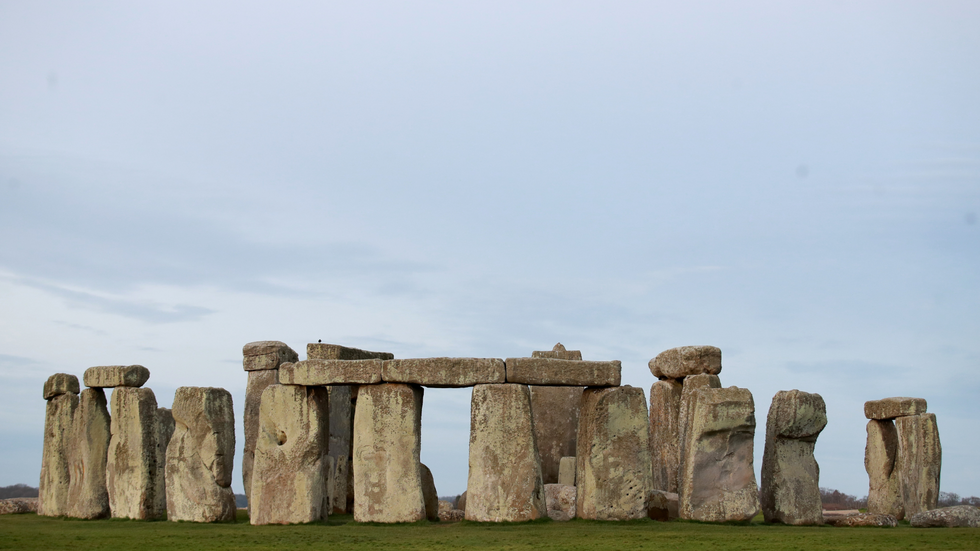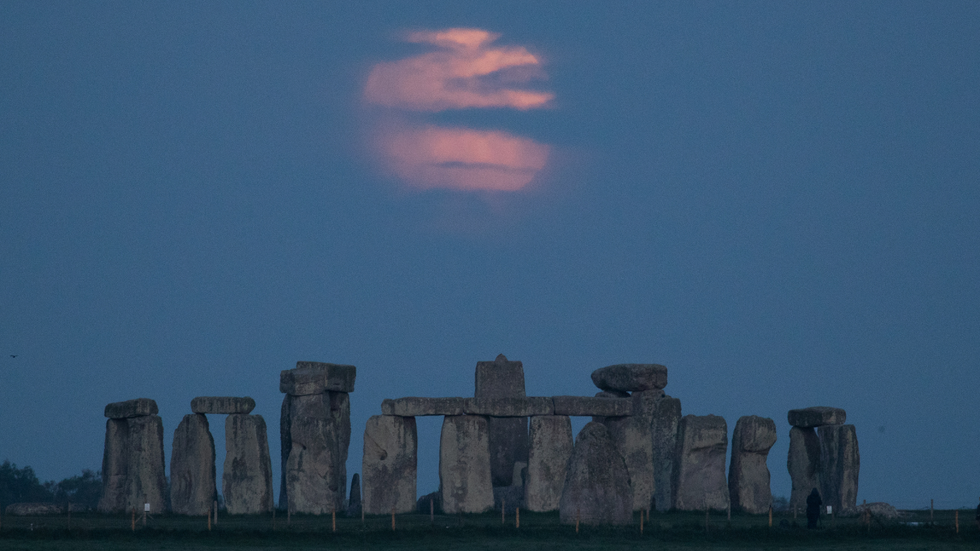Stonehenge mystery blown wide open as new evidence emerges into origins of ancient circle
The find has been hailed as 'fascinating evidence' about how the stones came to rest at the site
Don't Miss
Most Read
New evidence has been discovered behind the origins of Stonehenge.
A cow's tooth from a jawbone placed at the entrance to the monument nearly 5,000 years ago suggests the stones were brought some 125 miles from Wales to Salisbury Plain.
Scientific analysis of the molar tooth showed the animal was born in Wales, supporting the theory that cows were used to move the enormous stones across the country.
**ARE YOU READING THIS ON OUR APP? DOWNLOAD NOW FOR THE BEST GB NEWS EXPERIENCE**
The jawbone was first discovered a century ago - however, scientists had previously been unable to determine its place of origin, or why it had been placed there.
But after looking into the chemical makeup of the cow's tooth, scientists think they have an answer.
A team from the British Geological Survey (BGS), Cardiff University and University College London were able to track lead isotopes in the bovine molar to a point of origin.
Professor Jane Evans, a BGS honorary research associate, said: "It tells us that very early in its life it incorporated lead into its skeleton and that lead was from old Palaeozoic rocks, older than about 400 million years old.

New evidence has been discovered regarding the origins of the stones at Stonehenge
|PA
"Those types of rocks crop up primarily in Britain in Wales, which is the nearest supply, and also in the Lake District and Scotland.
"That suggests this animal, found in Wiltshire, didn't start life in that kind of area.
"It must have been grazing at some time on older rocks, and the obvious conclusion, given its Stonehenge, is that Wales is the probable origin of the cow's early life."
Professor Evans added: "The jawbone was placed in a very specific part of the earliest ring structure of Stonehenge, which implies it was some kind of ritual, archaeologists will say.
RECENT ARCHAEOLOGY BREAKTHROUGHS:

Although the cow's jaw was found at Stonehenge, researchers are unsure whether it travelled to the site alive, or if its remains were just buried there
|PA
"So the question is, why? And then you come to the question: has this animal come with the people who were involved in the transportation of the stones, or at least the earliest migrations of the people bringing the stones, from Wales to England."
Archaeologists had previously found no evidence to show that cows were used as beasts of burden in Neolithic times.
However, a recent paper suggested some cow's feet have a structure which indicates this could have been the case.
Professor Evans said: "It feeds into that narrative quite well."
If cows were not used, it is thought oxen may have been.
Professor Evans added: "I don't know how long it takes to drag stones from Wales to Stonehenge, but you need to be able to feed yourself and so it's going to be a big process.
"You have got to have a huge support network to do it."
Analysis of carbon isotopes showed that the cow's diet changed with the seasons, meaning either the cow moved seasonally or that winter feed was brought in.
Although the cow's jaw was found at Stonehenge, researchers are unsure whether it travelled to the site alive, or if its remains were just buried there.
Professor of British later prehistory at UCL, Michael Parker Pearson, said it was "yet more fascinating evidence for Stonehenge's link with southwest Wales" and raised "the tantalising possibility that cattle helped to haul the stones".
Richard Madgwick, a Professor of archaeological science at Cardiff, said: "It provides unparalleled new detail on the distant origins of the animal and the arduous journey it was brought on.
"So often grand narratives dominate research on major archaeological sites, but this detailed biographical approach on a single animal provides a brand-new facet to the story of Stonehenge."











